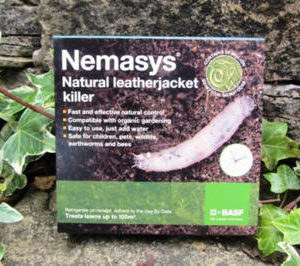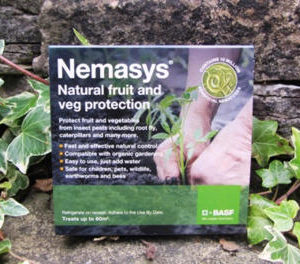Control whitefly in greenhouses and conservatories usingt this brilliant parasitic wasp.
The Pest : Tiny white moth-like sap-sucking pests, usually in massive quantities, that fly up when disturbed. The young stage is small, waxy scale-like and greenish white, found beneath the leaves. Infested plants yellow and may distort, and sticky honey dew, often followed by black sooty mould are common symptoms.
The Solution : Encarsia formosa :A tiny parasitic wasp which parasitises the young (scale) stage of the whitefly.
For use only against glasshouse whitefly, and only in greenhouses, conservatories or on house plants, not outside.
The adult wasp parasitises the 2-3 week old whitefly scales, turning them black. A young beneficial wasp will then hatch out of the blackened scale and zoom around looking for more whitefly scales that it will then parasitise.
Minimum daytime temperature 10C (50F).
You will be sent pupae of the wasp inside the black (parasitised) whitefly scales on cards which you hang on the infested plants. The cards carry over 300 per introduction.
To provide a good level of control you should introduce a second batch of wasps about 7 days after the first. This allows time for the offspring resulting from the first batch to hatch out and start controlling the whitefly. The system then becomes self-perpetuating until limited by factors such as low temperature or lack of whitefly!
We offer 2 pack sizes, ‘half’ (two introductions at seven day intervals)and ‘full’ (four introductions at 7 day intervals, for use in larger greenhouses or when the problem is quite advanced).
**General Notes for Biocontrols such as Encarsia**
These controls are totally safe for use near wildlife, pets, humans and other animals. They provide a brilliant way to sort out common pests without having to resort to using chemicals!
They are inclined to stay where their food source or breeding location is, so no need to worry about them all flying or running away!
These great biocontrols all have a built-in ‘seek and find mechanism so will actively search out the pests you have introduced them to control.
If you have been using chemical pesticides in your greenhouse/conservatory/frame/house, you may need to allow time for toxic pesticide residues to wear off before you introduce these great gardeners’ allies !
NB :
*Soap-based or fatty acid based sprays will kill beneficial insects if sprayed on to them BUT once they have dried on the leaf surface they become harmless.
* Pyrethrum based insecticides will kill the beneficial insects if applied on to them AND last for about 3 days on the treated surfaces.
**Insecticides containing imidacloprid, thiacloprid (and other neonicotinoid treatments) are extremely persistent and damaging to a very wide range of creatures . They can kill beneficial insects if directly on to them or if the beneficial insect feeds on a pest which has fed on a treated plant!





